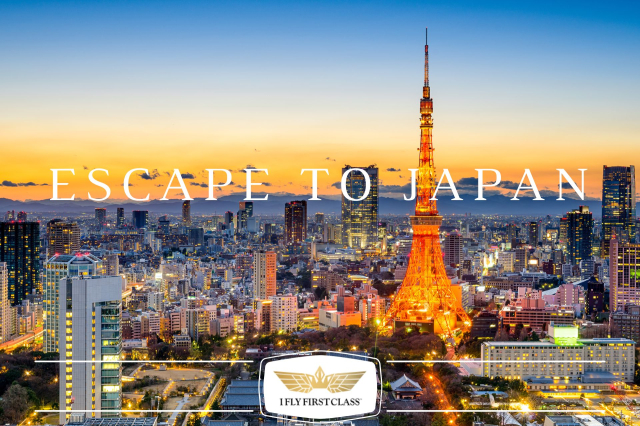Best deals on Cheapest Business Class To Seoul | IFlyFirstClass
Cheap Seoul Business Class
Seoul (서울) is the capital of South Korea. With a population of over 10.5 million, Seoul is by far South Korea’s largest city and one of East Asia’s financial and cultural epicenters.
With over 10 million people, a figure that doubles if you include neighboring cities and suburbs, Seoul is the largest city in South Korea and unquestionably the economic, political and cultural hub of the country. By some measures it is the second largest urban agglomeration on the planet, after Greater Tokyo. Situated between Shanghai and Tokyo and bordered by the impenetrable Democratic People’s Republic of Korea to the north, the South Korean capital is sometimes overlooked by travelers. However, Seoul is an exciting location in its own right, not to mention cheaper than its rivals and incredibly safe. With beautiful palaces, great food and a shopping nightlife, Seoul is a frenetic way to experience the Asia of old and new.
Historically there is evidence for settlement in this area as far as 18 BC but Seoul as the capital city of South Korea has a history back to the 14th century. Originally named Hanseong (한성; 漢城), the city was the capital of the Joseon Dynasty from 1392 to 1910, when Korea was occupied by the Japanese. The Joseon Dynasty built most of Seoul’s most recognisable landmarks, including the Five Grand Palaces and Namdaemun. After the Japanese surrender in 1945, the city was re-named to its current name, Seoul. Since the establishment of the Republic of Korea in 1948, Seoul has been the capital of South Korea. Occupied twice during the Korean War by Communist forces, the city was extensively rebuilt and today is one of Asia’s primary metropolises. Much of Seoul’s infrastructure and facilities, such as the buildings, stadiums, and transport systems, are exceptionally modern and clean.
Incheon Airport
Most visitors arrive via Incheon International Airport (IATA: ICN), located on Yeongjong Island in the neighboring city of Incheon and covered in detail in its own article.
The A’REX train link connects the airport to Seoul Station (for further connections to KTX high-speed services) and Gimpo Airport (most domestic flights), operating from 5:20 AM until midnight. Two versions exist: Express services to the city (every half hour) takes 43 minutes and cost ₩13,300 (with WiFi available on board), while commuter services (every 6 minutes) take 53 minutes and cost ₩3,700.
Travel time to Gimpo Airport is 28/35 minutes, with both services charging ₩3100, making this the fastest and cheap option for intra-airport transfer as well. If you are heading to Incheon International from Seoul Station and using Korean, Asiana or Jeju Air, the express train may be your best option. You can check your bags and even pass through security and immigration, allowing you to skip the lines at the airport and to spend a little longer in the city, or helping you make a mad dash to the airport.
However, if you have a lot of luggage or are heading to southern parts of Seoul (eg. Gangnam), the airport buses remain your best option. Limousine buses [6] (₩15,000 to/from city for one way, ₩6500 to/from Gimpo Airport (domestic flight)) travel directly to major areas and big hotels in Seoul, while public buses (₩8,000-9.000) will take you to major transit hubs. If you’re visiting for the first time, it’s worth paying a bit extra for the limousine bus. For either bus type, consult the big maps or staff to figure out which route best suits your needs; you can then find the shuttles outside 1st floor arrivals (if possible get this information from your hotel before arriving). Or simply, walk out and ask the many ticket sellers (they are wearing vests) which bus goes to your hotel because if it’s a popular one or in a popular area, they’ll surely know which you’ll need. It’s best to buy tickets at any of the the ticket gates near the bus arrival area but you can also pay the fare using won or a T-Money card if you have one. The limousine bus drivers are extremely friendly but don’t count on them knowing too much English. There are maps inside the buses letting passengers know which stops are upcoming and these are also announced in Korean and English. Pressing any of the red buttons inside signals to the driver you want off at the next stop.
You can purchase and recharge a T-Money card at the GS25 store which is located at the end of the arrivals area, next to “International Arrivals F” exit.
If you have a late flight and plan on getting into Seoul via bus, make sure you get out to the curb as soon as you can. The last buses run shortly after the last flights land. If you miss your bus, you’ll be stuck paying for a taxi, as the trains will stop running too.
A taxi direct to Seoul will run around ₩50,000/70,000 regular/deluxe. Black deluxe taxis (모범 택시) and almost all regular taxis accept credit cards, but a few regular taxis (일반 택시) may not. Ask the driver before you get on if you can pay by credit card. You are expected to pay any road tolls on top of the meter fare. Having your destination written down in Korean will be very helpful. Steer clear of taxi drivers trying to pick you up from inside the terminal and even the bus stop. As both buses and taxis are subject to traffic, allow extra time for rush hour delays (or take the train back).
Gimpo Airport
The closer but older Gimpo Airport (김포국제공항, GMP) caters only to the shuttle services to Tokyo-Haneda, Osaka-Kansai and Shanghai-Hongqiao, as well as domestic flights within South Korea.
Gimpo Airport is easily reached on the A’REX link from Seoul Station or Incheon Airport, as well as subway lines 5 and 9. All lines intersect Line 2 which runs in a large circle through Seoul. Line 9(Gold Line), the first privately run subway line in Seoul, has three express trains per hour. Travelers coming into Seoul should first have detailed directions to their destination from the nearest station then consult the subway map before deciding on which line and route to take. All three lines cost ₩1,000-2,100 (depending on distance), while a taxi to central Seoul will run around ₩30,000. Discounts for subway fare are available with T-Money cards.
InfoSource: Wikitravel Under Creative Commons Attribution-ShareAlike License.














